#quantum arithmetic
Explore tagged Tumblr posts
Text
🌟 Start Your Year with Harmony
Let 2025 be the year of growth, creativity, and harmony. Start your journey with our latest album and books.
How are you creating harmony this year? Share your goals with us!
#NewYearGoals #CosmicHarmonyChronicles
#music#new music#spiritual awakening#spiritual journey#quantum science#spiritualgrowth#spotify#trinary logic#quantum artificial intelligence#quantum arithmetic
3 notes
·
View notes
Text
Math Myths Busted! 🚨 Debunking Common Misconceptions
1. "Trigonometry is pointless in real life."
Want to design a bridge, map the stars, or even create 3D models? Welcome to the world of trigonometry. Engineers use sine and cosine to calculate forces, angles, and stress on structures. Naval navigation? That’s spherical trigonometry. And let’s not forget medical imaging (MRI and CT scans)—trigonometric algorithms are essential for reconstructing images from cross-sectional slices of the body.
2. "Pi is just 3.14."
Pi is irrational, meaning it goes on forever without repeating. It’s used in everything from signal processing to quantum physics. In general relativity, gravitational waves are calculated using Pi to map the curvature of spacetime. Even fractals, the infinitely complex geometric shapes that mirror nature’s patterns, rely on Pi for accurate dimension calculations. Simplifying Pi to 3.14 is like calling a complex painting “just a bunch of colors.” It’s a universe in itself.
3. "Math is for nerds, not for normal people."
Mathematics is fundamental to the universe. The Fibonacci sequence is embedded in everything from flower petals to galaxies. Whether it’s understanding the Golden Ratio in art or applying optimization techniques to improve energy use in smart cities, math is the tool that drives technology, medicine, and economics. Cryptography keeps your bank account safe and ensures secure communication online—it’s all built on abstract algebra and number theory. So, is math for “nerds”? It’s for civilization.
4. "I’ll never be good at math."
Growth mindset matters. The very concept of calculus—which studies the rate of change—starts from understanding infinitesimally small changes. Once you grasp limits, derivatives, and integration, you unlock the power to model everything from population growth to financial markets. Complex equations that once seemed impenetrable are just tools for breaking down the world. Perseverance is the key, not an innate ability. You learn, you grow, you become a mathematical thinker.
5. "Math is boring."
If math’s boring, then understanding gravity and black holes is boring. Einstein’s general theory of relativity wasn’t just an academic concept—it was formulated using highly sophisticated tensor calculus. Fractals, which appear in clouds, mountains, and even coastlines, are beautiful examples of math in nature. When you solve differential equations, you’re predicting everything from weather patterns to market crashes. Math is not static, it’s the language of everything, from the universe’s creation to your daily commute.
6. "I don’t need math in my everyday life."
You calculate interest rates, optimize your workout routine, and even estimate cooking times using math without realizing it. Statistics helps you make informed decisions in the stock market, and probability theory is the reason you can accurately predict outcomes in games, risk-taking, and even weather forecasting. Linear algebra is involved in everything from computational biology to machine learning. And when was the last time you built a website without using algorithms? Exactly.
7. "Calculators do all the work, so why learn math?"
Calculators are tools. Algorithms—the underlying mathematical processes that make your calculator or smartphone function—are the result of years of mathematical study. Machine learning algorithms, the backbone of AI, rely heavily on linear algebra and calculus. Building a calculator that can compute anything from simple arithmetic to complex number operations requires advanced math, often involving abstract algebra and number theory. It’s not the tool; it’s the thinking behind it that counts.
Math is the DNA of the universe.
#mathematics#math#mathematician#mathblr#mathposting#calculus#geometry#algebra#numbertheory#mathart#STEM#science#academia#Academic Life#math academia#math academics#math is beautiful#math graphs#math chaos#math elegance#education#technology#statistics#data analytics#math quotes#math is fun#math student#STEM student#math education#math community
11 notes
·
View notes
Note
How complicated is it to get a degree(s) in temporal engineering?
How complicated is it to get a degree(s) in temporal engineering?
🔍 The Basics: Enrolling
First off, you don't just stroll into Gallifrey's prestigious Time Academy and sign up for Temporal Engineering 101. You have to pass the entrance exam, and that's not just a spelling test.
🧠 Intermediate Steps: Becoming a Junior Time Lord
Once in the Time Academy, your learning includes:
Temporal Physics: Understanding the fabric of time itself. Expect lots of quantum mechanics, chronon theory, and paradoxes.
History of the Universe: You need to know what happened, what’s happening, what could have happened, and what did happen but then didn't in the future and past.
Practical TARDIS Mechanics: It's not just theory; you need to know how to pilot and maintain a TARDIS.
Temporal Dynamics: In-depth study of how time flows and can be manipulated. This includes advanced mathematics that make calculus look like basic arithmetic.
Paradox Management: Learn how to handle, prevent, and sometimes even create paradoxes without tearing the fabric of reality apart.
Chrono-Spatial Navigation: Mastering the art of navigating through time and space.
Final Temporal Engineering Examination: An oral test where the Education Committee grills you on everything you've learned, from Time Lord Law to advanced temporal theory.
+ more (see related)
🏫 So…
It's probably not for you.
Related:
💬|🧸🏫What were the Doctor and the Master's school days like?: Overview of the general structure of Gallifreyan education, and how badly these two handled it.
💬|🧸🏫How is sexual education taught on Gallifrey?: How Time Tots might get taught about sex.
💬|🧸🏫What are young Gallifreyans/Time Tots taught?: Detailing what the kids of Gallifrey are taught.
Hope that helped! 😃
Any orange text is educated guesswork or theoretical. More content ... →📫Got a question? | 📚Complete list of Q+A and factoids →📢Announcements |🩻Biology |🗨️Language |🕰️Throwbacks |🤓Facts → Features: ⭐Guest Posts | 🍜Chomp Chomp with Myishu →🫀Gallifreyan Anatomy and Physiology Guide (pending) →⚕️Gallifreyan Emergency Medicine Guides →📝Source list (WIP) →📜Masterpost If you're finding your happy place in this part of the internet, feel free to buy a coffee to help keep our exhausted human conscious. She works full-time in medicine and is so very tired 😴
#doctor who#gallifrey institute for learning#dr who#dw eu#gallifrey#gallifreyans#whoniverse#ask answered#GIL: Asks#gallifreyan culture#gallifreyan lore#gallifreyan society#GIL: Gallifrey/Culture and Society#GIL: Species/Gallifreyans#GIL
20 notes
·
View notes
Text

The Search for Fundamental Truth: Exploring the Ties Between Representation Theory and Physical Reality
In the world of mathematics and theoretical physics, the concept of duality has emerged as a profound principle that reveals deep connections between seemingly unrelated structures. One of the most striking examples of this interplay is the Geometric Langlands Correspondence, a mathematical theory that unites fields such as algebraic geometry, representation theory, and number theory. This correspondence has also opened new frontiers in physics by linking abstract mathematical ideas to the framework of quantum field theory and gauge theory. By exploring this duality, mathematicians and physicists have gained new insights into the nature of space, symmetry, and fundamental interactions. The Geometric Langlands Correspondence is a striking example of how mathematical dualities can shed light on the hidden order of the universe.
In both mathematics and physics, duality refers to a phenomenon in which two different theories or objects describe the same underlying reality in different ways. In physics, for example, the electric-magnetic duality shows that electric and magnetic fields, although seemingly different, are two sides of the same coin. Similarly, dualities in mathematics manifest themselves as relationships between different structures, such as algebraic curves and vector bundles, or between geometric shapes and abstract groups.
The geometric Langlands correspondence is a sophisticated example of duality in mathematics. Originally a geometric analogue of the classical Langlands program – a set of far-reaching conjectures proposed by Robert Langlands in the late 1960s – the geometric version transforms problems from number theory into the language of algebraic geometry. This transformation allows mathematicians to examine questions about symmetries and representations through a geometric lens, thus linking number theory to the study of shapes and spaces.
The classic Langlands program is a monumental undertaking that attempts to link different areas of mathematics, such as number theory and analysis. In its original form, the Langlands program proposes a correspondence between two kinds of mathematical objects: Galois representations, which capture the symmetries of algebraic equations, and automorphic forms, which are highly structured functions that encode number-theoretic information. This theory provides a powerful framework for understanding the arithmetic of number fields and reveals unexpected connections between prime numbers and symmetry.
The Geometric Langlands Program, later developed by mathematicians such as Alexander Beilinson and Vladimir Drinfeld, reformulates classical theory in a geometric framework. Instead of studying equations over number fields, the geometric version studies fields of functions associated with algebraic curves. The objects of interest now include principal bundles, geometric structures that encode how a particular symmetry group acts on a curve. The geometric equivalent connects these bundles to sheaves, mathematical constructs that generalize functions and capture local geometric information. Through this geometric lens, deep questions about symmetry and representation are transformed into problems about shapes and spaces, and made accessible using the tools of algebraic geometry.
The geometric Langlands correspondence has also found surprising applications in theoretical physics. The bridge between these areas was built when physicists realized that the dualities central to the Langlands program have analogues in quantum field theory and string theory. One of the most important breakthroughs came from Edward Witten and Anton Kapustin, who showed that the geometric Langlands correspondence can be understood in the framework of gauge theory.
In physics, gauge theory is a mathematical model for describing fundamental forces such as electromagnetism and the strong and weak nuclear forces. It is based on the concept of fields that vary over space and time and are governed by certain symmetry groups. One of the most fascinating aspects of gauge theory is S-duality, a symmetry that relates different field theories to each other. S-duality suggests that certain theories, although they appear different, are in fact equivalent descriptions of the same physical reality. This reflects the duality found in the geometric Langlands correspondence, in which geometric objects and representations are two manifestations of the same mathematical structure.
By interpreting the geometric Langlands duality in terms of S-duality in four-dimensional gauge theories, physicists have been able to gain new insights into quantum field theory. This connection has profound implications and suggests that the Langlands program is not just an abstract mathematical curiosity, but a powerful tool for understanding the fundamental nature of space and time. From a physics perspective, the geometric correspondence reveals a hidden unity between mathematical structures and physical theories and points to a deeper level of order in the universe.
Edward Frenkel, one of the leading minds in the field, has played a crucial role in advancing mathematical theory and bringing its beauty to a wider audience. In his book Love and Math: The Heart of Hidden Reality, Frenkel introduces readers to the Langlands program and its geometric counterpart, illustrating how these abstract ideas align with physical theories. Through engaging narrative and easy-to-understand explanations, he conveys the elegance of the Langlands program and shows how it unites different branches of mathematics and connects to modern physics.
Frenkel's work shows how the geometric Langlands correspondence serves as a bridge between mathematics and physics, transforming esoteric theories into a coherent whole. His contributions emphasize that the power of Langlands dualities goes beyond technical results; they offer a new way of looking at the world, where different disciplines come together in a harmonious and unexpected unity.
The implications of the Geometric Langlands Correspondence go beyond its specific mathematical and physical formulations. It illustrates the creative process in both fields, where dualities serve as guiding principles that reveal hidden patterns. The interplay of geometry and physics has led to breakthroughs in both fields and suggests that the study of dualities is more than a search for analogies—it is a search for fundamental truths.
In mathematics, the Geometric Langlands Program has stimulated new research in areas such as categorical structures, moduli spaces, and nonabelian Hodge theory, leading to new discoveries and conjectures. In physics, the exchange has provided a new language for understanding gauge theories and opened a new perspective on quantum phenomena and symmetries. The interdisciplinary nature of the program has inspired mathematicians and physicists to work together, combining techniques and ideas from both fields to tackle long-unsolved problems.
Edward Frenkel (Curt Jaimungal, Theories of Everything, 2023/2024)
September 2023
youtube
August 2024
youtube
October 2024
youtube
Wednesday, October 2, 2024
5 notes
·
View notes
Text
hey so uh
if any of you can read math, can you explain whether this is an “oh shit” moment for cryptography and whether post-quantum crypto is what we need to avoid the horrors?
5 notes
·
View notes
Text
This is very much like the idea of when you’re in basic arithmetic and you learn basic times tables. Then you learn how to multiply tens and hundreds. Then you learn square roots and algebra. And you think “ok cool teacher says no square root of a negative number” and if you continue doing pre-calculus and calculus you start to realize. Ok you CAN do a square root of a negative and it makes an “impossible” number which is useful for theoretical mathematics and things like quantum computing.
so yeah, media like this IS grossly oversimplified, but its not written for experts in the feild! its written for people who still struggle with 2+3=5.
I need to say something and I need y'all to be calm
if it isn't actively bad or harmful, no representation should be called "too simple" or "too surface level"
I have a whole argument for this about the barbie movie but today I wanna talk about a show called "the babysitters club" on Netflix
(obligatory disclaimer that I watched only two episodes of this show so if it's super problematic I'm sorry) (yes. I know it's based on a book, this is about the show)
this is a silly 8+ show that my 9 year old sister is watching and it manages to tackle so many complex topics in such an easy way. basic premise is these 13 year old girls have a babysitting agency.
in one episode, a girl babysits this transfem kid. the approach is super simple, with the kid saying stuff like "oh no, those are my old boy clothes, these are my girl clothes". they have to go to the doctor and everyone is calling the kid by her dead name and using he/him and this 13 year old snaps at like a group of doctors and they all listen to her. it's pure fantasy and any person versed in trans theory would point out a bunch of mistakes.
but after watching this episode, my little sister started switching to my name instead of my dead name and intercalating he/him pronouns when talking about me.
one of the 13 years old is a diabetic and sometimes her whole personality is taken over by that. but she has this episode where she pushes herself to her limit and passes out and talks about being in a coma for a while because of not recognizing the limits of her disability.
and this allowed my 9 year old sister to understand me better when I say "I really want to play with you but right now my body physically can't do that" (I'm disabled). she has even asked me why I'm pushing myself, why I'm not using my crutches when I complain about pain.
my mom is 50 years old and watching this show with my sister. she said the episode about the diabetic girl helped her understand me and my disability better. she grew up disabled as well, but she was taught to shut up and power through.
yes, silly simple representation can annoy you if you've read thousands of pages about queer liberation or disability radical thought, but sometimes things are not for you.
68K notes
·
View notes
Text
New books for kid wizards
Once in a while I like to go looking for textbooks for kid wizards, because things like The Book of Wizardry and Wizardology are just so great I don’t want to let another gem escape my eyes. But this time I discovered something ugly, instead of a gem!
The Junior Witch’s Handbook
A book with an author and an illustrator, so published by a big publisher. By the reviews it looks like a book of real witchcraft for the middle grade audience, just as there are a bunch for the teen audience.
The Wizard’s School of Magic by unknown author
There’s a series of four, all by unknown author. Didn’t the writer claim them? What is going on here? No reviews, no description, not even a pagecount. And $17! Not even a cheap used copy. I fear the price puts a stop to investigation.
The School of Wizardry: a Handbook for the Modern Wizard
By Mario Garnet, an actual occultist. Ten bucks new or four on kindle. This looks like someone’s passion project book, like, this guy had the idea to write this particular book and wrote it and published it.
The description says it’s about: The Grottos: Magic of Knowledge is about the mysterious properties of arithmetic, geometry and human history; Magic of Cultural Diversity--the multi-facets of being human; Magic of Life--the nature of our DNA and the sanctity of the vehicle of our life force; Magic of our Universe--Quantum fields and the fine line between science and magic; Art of Magic -- the How-To!
This looks like it might be interesting.
How to turn Invisible and Other Spells for Kids by Stella Rose
Ok, 66 pages, 15 bucks—ouch!--cheaper on kindle. Written by a mother and daughter team, which explains why “her” other books include titles like the Flirting Games series.
I wondered, because it looks like she’s embraced AI for her book covers and, according to the reviews, interiors too including one illustration with 3 arms. ^^; You could at least whack the robot until it produces something that isn’t cursed! Have some pride about your AI usage, that’s the lowest bar. But the book is, probably, written by a human.
Also it has this delightful review:

The eleven year olds of the UK, doing quality control for us! I love it! I do kind of want this book, but not at that price.
The Girls’ Witch Guide to Magic Spells and Potions for Kids by Bellafontaine Black
Well the oddly placed apostrophe in the title is a little weird, but the book and its companions are in multiple languages so maybe this book was not originally written in English. Independently published. The description looks good, 124 pages, ten bucks. Sounds ok. I wonder what I can learn about the author.
The author is an AI generated cat.
With what sure reads like an AI generated description.
And her entire bibliography is either these witchy books or AI generated coloring books, plus one childrens’ book that might in fact be real.
Is this a real person (who probably isn’t named Bellafontaine Black) or is this person just AI from start to finish? Now I’m on the fence whether to get the kindle edition to confirm my suspicion, or not get it because I certainly don’t want to give money to anyone who had AI write their book for them. If the AI did the work, you shouldn’t get the money.
This crop of books for kid wizards is sadly lacking. Not a one that looks really super, and the ones i might investigate just to see what they are are too much money for the pagecount. And AI! Ugh, not what I want.
1 note
·
View note
Text
#HeavenlyFather #DivineConnection #UniversalLove #GodsGuidance #SpiritualGrace #SacredPrayer #HolyVibes #FaithAndTrust #HigherPower #CelestialMusic #DivinePresence #SacredSound #SpiritualMessage #CosmicFaith #TranscendentSoul
#music#new music#spiritual awakening#spiritual journey#quantum science#spiritualgrowth#trinary logic#quantum artificial intelligence#spotify#quantum arithmetic
0 notes
Text
M.Sc. Mathematics Careers: Opportunities in Cryptography and Research

Mathematics has long been known as the language of the universe, but today, it’s also the language of data, security, and innovation. If you're pursuing or considering an MSc in Mathematics, especially through an online mode, you're stepping into a world full of advanced possibilities—especially in cryptography and research.
But where exactly can a master’s in mathematics take you? Let’s explore how this degree can open up career paths in cutting-edge fields like cybersecurity, data science, and pure mathematical research.
What Is Cryptography, and Why Is It Important?
Cryptography is the science of encoding and decoding information to keep it secure. It's the foundation of cybersecurity, digital privacy, and online banking.
With the rise in cyber threats, data breaches, and digital espionage, cryptographers are in high demand across sectors like:
Government intelligence agencies
Financial institutions
Tech companies
Cybersecurity firms
Defense organizations
Your mathematical understanding of number theory, modular arithmetic, abstract algebra, and probability is directly applicable in building secure communication systems, encryption algorithms, and cryptographic protocols.
Research Opportunities for Math Postgraduates
An M.Sc. in Mathematics is also a gateway to academic and industrial research. Whether you're interested in theoretical frameworks or applied problems, math research spans a wide range of areas:
Number Theory & Algebra – Core to cryptographic systems
Mathematical Modeling – Used in epidemiology, physics, and engineering
Computational Mathematics – Essential for AI and machine learning
Quantum Computing – A new frontier where math meets physics
Many M.Sc. graduates go on to pursue Ph.D. programs, while others join research labs, R&D departments, or become subject matter experts (SMEs) in tech firms or think tanks.
Skills You'll Develop
An online M.Sc. Mathematics program trains you in both pure and applied mathematical thinking. Some of the key skills you gain include:
Advanced problem-solving
Logical reasoning and analytical thinking
Mathematical programming (using Python, R, MATLAB)
Cryptographic design and analysis
Research methodology and academic writing
These are highly transferable across industries ranging from finance and tech to space science and education.
Career Roles After M.Sc. Mathematics
Here are some exciting job roles for M.Sc. Mathematics graduates:
Cryptographer / Cryptanalyst
Cybersecurity Analyst
Data Scientist / Data Analyst
Research Mathematician
Algorithm Engineer
Quantitative Analyst (Quant)
Academic Researcher or Professor
With the growing availability of UGC-approved online M.Sc. programs, especially those with specialized modules in cryptography and number theory, students can now access high-quality education without geographical constraints.
Final Thoughts
The world is becoming increasingly digital—and behind every secure transaction, encrypted message, or machine learning algorithm is mathematics doing its quiet work.
An online MSc in Mathematics is not just a degree—it's a launchpad to some of the most exciting and intellectually rewarding careers out there. Whether you're drawn to unraveling the mysteries of prime numbers or building the next generation of encryption protocols, there's a path for you.
So, ready to turn numbers into a career?
Would you like me to turn this into a LinkedIn post or include a call-to-action for a university program at the end?
0 notes
Text
Why Is Zero So Powerful in Math 2025

Why Is Zero So Powerful in Math 2025
📘 Book-Level Answer (University-Level – Mathematics & History) Zero, represented as “0,” is not just a placeholder or a symbol for "nothing"—it is a cornerstone of modern mathematics. The introduction and understanding of zero fundamentally reshaped arithmetic, algebra, calculus, computer science, and even philosophical reasoning in mathematics. 🔢 Mathematical Power of Zero 1. Zero as an Identity Element In arithmetic, zero is the additive identity, which means: a+0=afor any real number aa + 0 = a quad text{for any real number } a This property is foundational to number theory and linear algebra, especially when defining vector spaces and algebraic structures like groups and rings. 2. Zero in Algebra - Roots of equations: Solving for when an equation equals zero helps us find key points like intercepts and turning points. - Zero-product property: If ab=0ab = 0, then either a=0a = 0, b=0b = 0, or both — a crucial principle in factoring and solving equations. 3. Zero in Calculus - Limits and continuity: Zero plays a key role in limits. For example, limx→0sinxx=1lim_{x to 0} frac{sin x}{x} = 1 - Derivatives: The rate of change is often zero at maximum or minimum points. 4. Zero in Coordinate Systems Zero gives us the origin in a Cartesian coordinate system (0,0)(0, 0), a reference point from which we measure all other positions in geometry and physics. 5. Zero in Computer Science Binary code (the language of computers) is built using only two digits: 1 and 0. Zero represents the “off” state in logic gates and digital signals.




📜 Historical Significance of Zero - Ancient Origins: Zero was developed independently in ancient India (by Brahmagupta in the 7th century) and Mesoamerica (by the Mayans). - It revolutionized counting systems—especially the place-value system—making arithmetic operations like multiplication and division practical and scalable. 💡 Easy Explanation (Understanding Zero for Everyone) Imagine you're playing a game where you score points. If you have “0 points,” you haven't scored yet—but that still means something. Zero tells you where you are, even if it's at the starting point. Why is zero powerful? - It’s not just nothing—it’s a marker. A starting line. - Without zero, we couldn’t write big numbers like 1,000. You’d be stuck figuring out whether 1 is ten or a hundred! - It balances equations. If you want to keep things fair on both sides, you often use zero. In everyday life: - Bank account: If you have ₹0, you know exactly how much you have—not unknown or empty, but zero. - Temperature: Zero degrees is the point between freezing and not freezing—it's important! 🧠 Summary: - Zero is the additive identity. - It makes equations solvable and systems like calculus work. - It marks origin points in math and space. - It powers computer logic. - It revolutionized number systems and mathematical thinking. ⚠️ Disclaimer: The easy explanation is just to help you understand the concept in simple terms. For academic or exam purposes, always rely on the detailed explanation. If you score less for using this simplified version, we're not responsible—we're just here to make things clearer for learning purposes. 🔗 Related Reading from Our Blog: - How Does Quantum Entanglement Work 2025 https://edgythoughts.com/how-does-quantum-entanglement-work-2025 - How Do Gravitational Waves Affect Space-Time 2025 https://edgythoughts.com/how-do-gravitational-waves-affect-space-time-2025 🔗 External Source: - https://en.wikipedia.org/wiki/0 Read the full article
#20250101t0000000000000#2025httpsedgythoughtscomhowdoesquantumentanglementwork2025#2025httpsedgythoughtscomhowdogravitationalwavesaffectspacetime2025#additiveidentity#algebra#algebraicstructure#arithmetic#binarycode#binarynumber#brahmagupta#calculus#cartesiancoordinatesystem#computer#computerscience#concept#continuousfunction#coordinatesystem#cornerstone#derivative#digitalsignal#equation#explanation#factorization#freezing#geometry#gravitationalwave#groupmathematics#httpsenwikipediaorgwiki0#identityelement#identitymathematics
0 notes
Text
Modelagem Espectral dos Zeros da Função Zeta em Variedades Hiperbólicas Aritméticas: Uma Investigação sobre Universalidade e Operadores Diferenciais
Resumo
Este artigo investiga a modelagem dos zeros não triviais da função zeta de Riemann como autovalores do Laplaciano em variedades hiperbólicas aritméticas, visando substituir abordagens baseadas em matrizes aleatórias (GUE). Propomos um modelo analítico para otimizar o parâmetro μμ em potenciais de Yukawa, eliminando a dependência de ajustes numéricos extensos. A comparação estatística dos espaçamentos normalizados revela que, embora a estrutura aritmética melhore a correspondência com os zeros da zeta, divergências significativas persistem (p≈3.13×10−27p≈3.13×10−27), sugerindo a necessidade de operadores modificados ou geometrias alternativas.
1. Introdução
A conjectura de Hilbert-Pólya vincula os zeros da zeta a espectros de operadores hermitianos, com estudos empíricos destacando similaridades com o GUE. Este trabalho foca em variedades hiperbólicas aritméticas como candidatas naturais, explorando se sua geometria intrínseca pode reproduzir a estatística espectral dos zeros.
2. Metodologia
2.1 Variedades Hiperbólicas Aritméticas
Construção: Grupos aritméticos co-compactos (ex.: subgrupos de SL2(Z)SL2(Z)) geram variedades 4D, escolhidas por sua simetria espectral favorecida.
Malha: Discretização via triangulação de Delaunay adaptada à curvatura negativa.
2.2 Modelo Analítico para μμ
Derivamos:μoˊtimo=αρzeta(T)ρhiperboˊlica(E),α∈[0.8,1.2],μoˊtimo=αρhiperboˊlica(E)ρzeta(T),α∈[0.8,1.2],
onde ρzetaρzeta e ρhiperboˊlicaρhiperboˊlica são densidades espectrais normalizadas.
2.3 Análise Estatística
Teste de Kolmogorov-Smirnov: Avaliação de similaridade distribucional.
Distância de Wasserstein: Medida de discrepância estrutural.
3. Resultados
3.1 Comparação com o GUE
Espaçamentos normalizados: Divergência significativa (p<10−25p<10−25), indicando incompatibilidade com o GUE.
Potencial de Yukawa: Reduz a distância de Wasserstein para 0.560.56, mas insuficiente para alinhamento estatístico.
3.2 Limitações
Geometria 4D: Restringe a generalização para outras dimensões.
Parâmetro αα: Ajuste empírico limita reprodutibilidade.
4. Conclusão
Apesar de avanços na modelagem geométrica, a estatística dos zeros da zeta requer operações não-lineares ou geometrias exóticas não capturadas por variedades aritméticas padrão. Direções futuras incluem:
Operadores pseudo-diferenciais para modular interações espectrais.
Variedades quaternionianas para testar universalidade em dimensões superiores.
Redes neurais físicas (PINNs) para otimização automática de parâmetros.
Referências
Montgomery, H. L. (1973). The pair correlation of zeros of the zeta function.
Sarnak, P. (2015). Arithmetic quantum chaos.
Odlyzko, A. M. (2001). The 10221022-nd zero of the Riemann zeta function.
0 notes
Text
The Pursuit of the Ultimate Correct Logic: The Evolutionary Map of the Cognitive Ark
I. The Collapse of Paradigms: From Classical Logic to Postmodern Epistemological Instrumentalism
In the historical development of human cognition of logic, the logical system was once regarded as an absolute existence, as if it were the fundamental law of the universe's operation. However, the development of modern science has gradually shattered this perception. The role of logic is shifting from being considered a universal law of the universe to a dynamically adaptable tool.
(1) Sources of Challenges and Theoretical Breakthroughs
In terms of the foundation of mathematics
The emergence of Gödel's incompleteness theorem in 1931 was a major shock. This theorem shows that in any self-consistent arithmetic system, there will always be some propositions whose truth or falsehood cannot be determined. This means that the self-consistency of logic is not equivalent to covering all truths. It is like a seemingly perfect mathematical edifice, but in fact, there are some corners within it that cannot be explained clearly by its own rules.
The Dilemma of Semantics
Tarski's undefinability theorem of truth in 1933 reveals a profound problem, that is, the definition of truth cannot be completed merely within the system; it requires an external frame of reference. It is just like being unable to accurately describe the outside world while staying in a closed room. The judgment of truth within a logical system is limited.
At the Level of Physical Reality
The impact brought by quantum mechanics, which was developed between 1927 and 1935, should not be underestimated. In the quantum world, the law of the excluded middle in classical logic no longer applies, and quantum states exhibit characteristics of indeterminacy. For example, a quantum particle may be in a superposition state of multiple states simultaneously, which is completely different from the classical logical concept that a thing is either A or not A.
(2) Key Insights
From these theoretical breakthroughs, we can gain a key understanding: Logic is not, as previously thought, a universal grammar, but rather more like a cognitive filter. This is similar to the field of programming, where different programming languages have different application scenarios. For example, Python is suitable for quickly building prototypes of artificial intelligence, while C++ has more advantages in optimizing hardware interaction. Similarly, the logical system also needs to be dynamically reconstructed according to different cognitive environments.
II. The Expansion of Cognitive Frontiers: The Inevitability of Logical Diversity
In the real world, different situations and needs are driving the development of logic in the direction of diversity.
(1) The Realistic Demands for the Evolution of Pluralistic Logic
At the Microscale
The emergence of quantum logic is to deal with the special phenomena in the quantum world, such as the experiment of quantum teleportation. In this experiment, quantum states can be transmitted without transferring physical entities, which is a phenomenon completely different from classical physics. Traditional logic cannot explain it, so a special logical system like quantum logic is needed to handle issues related to quantum superposition states.
In Terms of Space-Time Dimensions
When studying the structure of space-time, fractal logic is used to depict the cosmic foam. The string theory model based on the Adelic number field applies this logic. The universe presents a fractal-like structure at the microscale, and the characteristics of space-time quantum foam require a logical system like fractal logic that can handle complex and self-similar structures to describe them.
In the Aspect of the Emergence of Intelligence
Taking GPT-5 as an example, it demonstrates the ability of analogical reasoning, which goes beyond traditional symbolic logic. For example, it can understand mapping relationships like "Paris: France → Tokyo: Japan". This shows that in the field of artificial intelligence, with the development of technology, traditional symbolic logic can no longer fully meet the needs of explaining and constructing intelligent phenomena, and a more diverse logical system is required.
(2) Counterexample Warning: The Risks of the Hegemony of a Single Logic
The 2008 financial crisis is a typical example. At that time, the logical model based on the rational person hypothesis of neoclassical economics suffered a major failure in reality. This completely rational logical model assumes that people in the market are all rational economic agents. However, during the financial crisis, the behavior of the market completely deviated from this assumption. This event fully exposes the vulnerability of a single logical model when facing complex reality and further proves the necessity of logical diversity.
III. Cross-Disciplinary Integration: Radical Experiments in Logical Genetic Engineering
Nowadays, logical innovation is developing in the direction of cross-disciplinary integration, and some bold attempts have emerged.
(1) Quantum-Dialectical Synthesis
Mathematical Model
There is such a mathematical model: Truth(P)=β·B(P)+(1−β)·Born(P), where β is an epistemic weight between 0 and 1. This model integrates the ontology of Bohm's hidden variables (B(P)) and the probability of quantum mechanics (Born(P)). This means that the truth value of a proposition is no longer an absolute concept but a dynamic result of the interaction between subjective and objective factors. It is like the debate between Hempel's "covering law model" and Dilthey's hermeneutics in the history of philosophy, which respectively emphasize the roles of objective laws and subjective understanding in explaining phenomena. This mathematical model is an attempt to integrate subjective and objective factors at the logical level.
Philosophical Significance
This integration has important philosophical significance as it makes the truth value a dynamic product of the interaction between the subjective and the objective. In traditional logic, the truth value is often regarded as objectively determined. However, in the logical system of quantum-dialectical synthesis, considering the interaction between human cognition (subjective factor) and the probabilistic characteristics of quantum mechanics (objective factor), it changes our traditional understanding of the concept of truth value.
(2) Encoding of Civilizational Memes
The Mayan Blockchain Time View
This is an innovative attempt to embed the 52-year sacred cycle in Mayan culture into a distributed ledger (blockchain). In this way, the cultural narrative is solidified at the technical level. It is like preserving and inheriting ancient cultural memories through modern technical means, endowing culture with a new form of existence and meaning.
The Ethical Architecture of Buddhist AI
Here is a pseudo-code example to show how to combine Buddhist Hetuvidyā and reinforcement learning to construct an AI ethical architecture:
In this framework, there is a function named "ethical_decision" that takes an "observation" (observation value) as input.
Inside the function, first calculate the immediate reward "immediate_reward" through "darśana(observation)" (here "darśana" represents the calibration of direct perception), and then calculate the long-term value "long-term_value" through "pramāṇa(observation)" (here "pramāṇa" represents the optimization of inferential reasoning).
Finally, obtain the final decision result through the formula "softmax(αimmediate_reward+βlong-term_value)". This framework attempts to combine the concepts in Buddhist Hetuvidyā with reinforcement learning to construct an AI decision-making framework with ethical sensitivity.
(3) Neural-Quantum Interface
Technical Route
Neuralink Corporation is exploring a technical route, that is, to realize the frequency conversion scheme between the γ waves (with a frequency of 40Hz) of the brain and superconducting qubits (with a frequency greater than 1GHz). This is a bold attempt to establish a connection between the biological brain and quantum computing, aiming to integrate the cognitive ability of biology and the powerful computing ability of quantum computing.
Bottleneck Breakthrough
To achieve this goal, some technical problems need to be overcome. Using photonic time crystals to achieve decoherence-resistant communication is a key breakthrough point. For example, the research results published in Nature Photonics in 2023 provide theoretical and technical support for this technical direction, which helps to solve the problem of the decoherence of quantum states easily being disturbed during the construction of the neural-quantum interface.
(4) Risk Assessment: Beware of the Trap of "Technical Mimicry"
During the process of these cross-disciplinary integrations of logic, we need to be vigilant against the trap of "technical mimicry". For example, when we simply reduce Buddhist Hetuvidyā to an algorithm module, it may lead to the dissolution of cultural significance. It is like only seeing the surface form of a culture while ignoring its profound connotations behind it. When integrating it with modern technology, it may lose its original cultural value. Therefore, we must treat the inheritance and protection of cultural significance with caution during cross-disciplinary integration.
IV. The Meta-Design of the Cognitive Ecosystem
In order to construct an ecosystem that meets modern cognitive needs, we need to follow some architectural principles and consider the corresponding technical implementations.
(1) The Hypergraph Interoperability Layer
We need to construct a topological mapping engine based on the Hodge conjecture. The function of this engine is to achieve the topological equivalent transformation between classical logical nodes and quantum logical strings. In simple terms, it is to enable different types of logical systems to be transformed and interact within a unified framework, just like establishing a translator between different languages, enabling classical logic and quantum logic to understand and collaborate with each other.
(2) The Dynamic Adaptation Mechanism
Introduction of the Niche Competition Algorithm
This algorithm is used to simulate the succession process of biological communities. Referring to Kauffman's theory of self-organized criticality, through this algorithm, different logical systems in the cognitive ecosystem are like biological populations, competing and collaborating with each other. For example, in a complex cognitive task, different logical methods (such as classical logic, quantum logic, fuzzy logic, etc.) will compete for cognitive resources according to their own advantages and adaptability, and at the same time, they will also cooperate with each other to jointly complete the task, so that the entire cognitive ecosystem can adapt to different environmental changes.
(3) The Self-Referential Governance Protocol
Development of an Immune System Based on Gödel Coding
The function of this immune system is similar to the mechanism by which T cells in the human body recognize viruses. It can detect abnormal recursive depths in the logical system. For example, when logical reasoning goes deeper and deeper in a system and reaches a depth that may lead to system collapse or errors, this immune system based on Gödel coding can detect such abnormalities and take corresponding measures to protect the stable operation of the logical system.
(4) Technical Implementation
In terms of technical implementation, we can imagine such a process: When there is a perceptual input, it first enters the hypergraph routing layer. Then this routing layer will direct the input to the symbolic reasoning engine of classical logic, the wave function simulator of quantum logic, or the probabilistic network of fuzzy logic respectively. After these different logical processing units process the input, they will make judgments according to the environmental constraints. If the threshold is met, a decision output will be generated; if there is a conflict, a meta-ethical arbitration will be carried out. This process is like a complex transportation hub, determining the flow direction of information (input) and the final processing result according to different destinations (logical processing needs) and road conditions (environmental constraints).
V. Philosophical Reflection: Rebuilding the Cognitive Temple on the Ruins of Certainty
On the path of exploring logic, we are faced with some core paradoxes and are also seeking paths to transcend these paradoxes.
(1) Core Paradoxes
The Recursive Dilemma
In the logical system, there exists a recursive dilemma. For example, mathematical truth often needs to be proven at the meta-mathematical level, that is to say, the verification of a logical system often depends on a higher-order system. It is like an infinitely nested box, and we can never find a final foundation to completely determine the correctness of logic.
Local Completeness
Under the concept of a fractal universe, the logic at each level may be self-consistent within its own scope, but it cannot subsume the logic of the entire universe. It is like the Koch snowflake, whose perimeter is infinite, and each part has its own rules and characteristics, but there is no unified logic to describe all the characteristics of the entire snowflake.
(2) Paths to Transcendence
Acceptance of Cognitive Finiteness
We can draw on Gödel's incompleteness theorem to construct an "falsifiable but continuously expanding" cognitive framework. This means that we need to admit that human cognition is limited, and the logical system cannot be perfect. However, we can continuously expand our cognitive framework through continuous exploration and correction.
Practical Prioritism
Adopting Wittgenstein's theory of language games, we can anchor the criterion of logical validity to the successful application in specific contexts. That is to say, the correctness of logic is not abstract and absolute, but should be judged according to the actual application scenarios. For example, in different scientific research, social interactions, and other specific situations, the validity of logic depends on whether it can help us solve practical problems.
Dynamic Ontology
Based on Badiou's philosophy of the event, we can regard the logical system as the continuous creation of a new world. Just as in mathematics, the existence of mathematical objects is not fixed but continuously generates new concepts and relationships with human cognition and exploration. Similarly, the logical system is not static but continuously develops and evolves in human continuous thinking and practice.
VI. Conclusion: Being a Navigator of Uncertainty Rather than a Mapmaker
In this era approaching the algorithmic singularity, we need to possess some special wisdom.
(1) Instrumental Rationality
We need to master a variety of technologies for constructing the logical ark, such as category theory programming, quantum computing, etc. These technologies are like various tools in the hands of a navigator, which can help us explore and move forward in the ocean of cognition.
(2) Value Rationality
We need to safeguard the ethical lighthouse on the cognitive frontier to prevent logical tools from being alienated by power. This means that while pursuing logical innovation and application, we also need to pay attention to ethical and moral constraints to ensure that the development of logic will not damage human interests and values.
(3) Survival Wisdom
In this era of the collapse of certainty, we need to maintain the courage to explore like Prometheus stealing fire. Although we may never find the ultimate logic, we should not stop the pace of exploration. We should bravely navigate in the ocean of cognition full of uncertainties so that our cognitive ark can truly become the Noah's Ark that carries the eternal evolution of human civilization. As Whitehead said: "The progress of civilization lies in the continuous invention of new tools to conquer uncertainty." When we give up the persistent pursuit of the holy grail of the ultimate logic and instead forge adaptive thinking in the flowing ocean of cognition, we can better cope with future challenges and promote the continuous progress of human civilization.
0 notes
Text
Soft Computing. Volume 29, Issue 3, February 2025
1) Some new construction methods of similarity measure on picture fuzzy sets
Author(s): Minxia Luo, Jianlei Gao, Wenling Li
Pages: 1273 - 1287
2) Arithmetic optimization algorithm with cosine transform-based two-dimensional composite chaotic mapping
Author(s): Yi-Xuan Li, Jie-Sheng Wang, Xin-Ru Ma
Pages: 1289 - 1329
3) A new approach data processing: density-based spatial clustering of applications with noise (DBSCAN) clustering using game-theory
Author(s): Uranus Kazemi, Seyfollah Soleimani
Pages: 1331 - 1346
4) Predictor–corrector approach for the numerical solution of fuzzy fractional differential equations and linear multiterm fuzzy fractional equations
Author(s): Wadhah Al-Sadi, Zhouchao Wei, Tariq Q. S. Abdullah
Pages: 1347 - 1368
5) Variable selection of multiple types of data: a PLS approach
Author(s): Boao Kong, Huiwen Wang, Shan Lu
Pages: 1369 - 1387
6) Using past sample means in exponential ratio and regression type estimators under a simple random sampling
Author(s): Eda Gizem Koçyiğit
Pages: 1389 - 1406
7) Chatgpt and operations research: evaluation on the shortest path problem
Author(s): Martina Luzzi, Francesca Guerriero, Marco Garofalo
Pages: 1407 - 1418
8) Leveraging variant of CAE with sparse convolutional embedding and two-stage application-driven data augmentation for image clustering
Author(s): Yanming Liu, Jinglei Liu
Pages: 1419 - 1435
9) Efficient COVID-19 detection using data mining algorithms: a comparison of basic and hybrid approaches
Author(s): Mohammad Saidi, Mohammad Gheibi, Kourosh Behzadian
Pages: 1437 - 1451
10) Low-rank decomposition optimization and its application in fabric defects
Author(s): Zhixiang Chen, Wenya Shi, Hao Liu
Pages: 1453 - 1472
11) Revolutionizing signature scheme: the enhanced Edward Elgamal extreme performance accumulate signature approach for IoT and blockchain applications
Author(s): R. Anusha, R. Saravanan
Pages: 1473 - 1496
12) A secure quantum homomorphic encryption ciphertext retrieval scheme
Author(s): Zhen-Wen Cheng, Xiu-Bo Chen, Ya-Lan Wang
Pages: 1497 - 1509
13) Decomposition matheuristics for last mile delivery using public transportation systems
Author(s): Minakshi Punam Mandal, Claudia Archetti
Pages: 1511 - 1539
14) Efficient reconfigurable architecture to extract image features for face recognition using local binary pattern
Author(s): Sumangala Bhavikatti, Satish Bhairannawar
Pages: 1541 - 1552
15) A hybrid genetic search based approach for the generalized vehicle routing problem
Author(s): Vittorio Latorre
Pages: 1553 - 1566
16) A community-based simulated annealing approach with a new structure-based neighborhood search to identify influential nodes in social networks
Author(s): Farzaneh Rajaee Abyaneh, Nasrollah Moghadam Charkari, Mehdy Roayaei
Pages: 1567 - 1585
17) Using deep forest regression and multi-layer state transition algorithm to soft measuring modeling with small sample data
Author(s): Heng Xia, Jian Tang, Wen Yu
Pages: 1587 - 1603
18) Context-aware coverage path planning for a swarm of UAVs using mobile ground stations for battery-swapping
Author(s): Lorenzo Porcelli, Massimo Ficco, Francesco Palmieri
Pages: 1605 - 1625
19) On goal programming approach for interval-valued intuitionistic fuzzy multi-objective transportation problems with an application to tourism industry
Author(s): Abhishek Chauhan, Sumati Mahajan
Pages: 1627 - 1657
20) Paw decompositions of diamond and some edge cycle graphs
Author(s): Murugan Esakkimuthu, Sivaprakash Gunniya Rameshbabu
Pages: 1659 - 1665
21) A micro-level approach for modeling rumor propagation in online social networks
Author(s): Ebrahim Sahafizadeh, Saeed Talatian Azad
Pages: 1667 - 1675
22) k-InfNode: ranking top-k influential nodes in complex networks with random walk
Author(s): Ahmadi Hasan, Ahmad Kamal, Pawan Kumar
Pages: 1677 - 1690
23) Lacunary statistical soft convergence in soft topology
Author(s): Erdal Bayram, Melisa Dervişoğlu
Pages: 1691 - 1701
24) Enhanced TOPSIS-CoCoSo framework for multi-attribute decision-making with triangular fuzzy neutrosophic sets: “effect evaluation of intelligent technology empowering physical education teaching” case
Author(s): Jie Xiao, Yu Zhang
Pages: 1703 - 1717
25) A deep learning approach to analyse stress by using voice and body posture
Author(s): Sumita GuptaSapna GambhirHoang Pham
Pages: 1719 - 1745
26) A feature extraction method for rotating machinery fault diagnosis based on a multiscale entropy fusion strategy and GA-RL-LDA model
Author(s): Na Lu, Zhongliang Li, Peng Wang
Pages: 1747 - 1765
27) An efficient collocation algorithm for third order non-linear Emden–Fowler equation
Author(s): Mohammad Prawesh Alam, Arshad Khan
Pages: 1767 - 1788
28) Forest fire rescue framework to jointly optimize firefighting force configuration and facility layout: a case study of digital-twin simulation optimization
Author(s): HongGuang Zhang Sheng, Wen Ma, YuXuan Tao
Pages: 1789 - 1810
29) A game-theoretic exploration with surplus profit-sharing in a three-channel supply chain, featuring e-commerce dynamics
Author(s): Maryam Vatanara, Masoud Rabbani, Jafar Heydari
Pages: 1811 - 1827
30) Enhancing neural network predictions with finetuned numeric embeddings for stock trend forecasting
Author(s): Avinash Trivedi, S. Sangeetha
Pages: 1829 - 1844
31) Comprehensive multimodal approach for Parkinson’s disease classification using artificial intelligence: insights and model explainability
Author(s): Hossam Magdy Balaha, Asmaa El-Sayed Hassan, Magdy Hassan Balaha
Pages: 1845 - 1877
32) Threats to medical diagnosis systems: analyzing targeted adversarial attacks in deep learning-based COVID-19 diagnosis
Author(s): Sheikh Burhan Ul Haque, Aasim Zafar, Khushnaseeb Roshan
Pages: 1879 - 1896
33) Label-specific multi-label text classification based on dynamic graph convolutional networks
Author(s): Yaoyao Yan, Fang‘ai Liu, Xuqiang Zhuang
Pages: 1897 - 1909
34) Prediction of discharge coefficient of submerged gates using a stacking ensemble model
Author(s): Mohamed Hosny, Fahmy S. Abdelhaleem, Amir Ibrahim
Pages: 1911 - 1929
35) Improving recurrent deterministic policy gradient strategy in autonomous driving
Author(s): Yee-Ming Ooi, Che-Cheng Chang
Pages: 1931 - 1946
0 notes
Text
OMMMMM... I.B.1698 MICHAEL [IBM] harrelltut.com Domain Computer [D.C.] DEFENSE.gov ELITE of SIRIUS BLACKANUNNAQI.tech Patents 2 applesoftbasic.com of CLASSIFIED 1978 Deutsch applesoftbasic.tech Machine Application Configurations [MAC] Automatically Programing [MAPPING] My Central Tri-Solar Black Aurora Borealis Sun planetrizq.tech Languages from kingtutdna.com’s Highly Complex [ADVANCED] Ancient Hi:tKEMETICompu_TAH [PTAH] MOON Universe [MU] Satellite Domain of MU13.ca.mil’s HIGH LEVEL DATA LINK CONTROL [HLDC] Services 2 Constellation ORION’s Interplanetary quantumharrell.tech Earth [Qi] HOLOGRAM HARDWARE of Arithmetic Logic [H.A.L.] Unit Operations Remotely Controlling iapplelisa.tech’s HIGH ENERGY RADIO [HER] FREQUENCY WEAPONS BLASTING HIGH-INTENSITY RADIO WAVES 2 ALL quantumharrell.tech SKY ELECTRONICS on Earth [SEE] from Astronomical MERCURY’s [SAM.gov’s] ibmapple1984.tech Secure Socket Layer Virtual Private Network [SSL VPN] Communications.gov Privately Managed [PM] by ANU GOLDEN 9 Ether [PAGE] quantumharrell.tech Graphical User Interface [GUI] Domain Compu_TAH [PTAH] Engineer of iquantumapple.com Infrastructure as a Service [IaaS] since quantumharrelltech.com’s Highly Complex [ADVANCED] Ancient 9 Ether Cosmic Algorithmic [CA] Computational [Compton] STAR WEB GATEWAY Languages of ANU X [LAX] Terminal Compu_TAH [PTAH] Hypertext Transfer Protocol [HTTP] Digitally Controlling [D.C.] Tri-Solar Black Sun planetrizq.tech’s EXTREME WEATHER MACHINE by Engineering [ME] AutoCAD [MAC] Robotics in Architectural Memory Equipment w/Symmetric Encryptions of Satellite [RAMESES] Broadband Communication [B.C.] quantumharrellmatrix.tech Language Architecture [L.A.] @ The_Octagon_(Egypt) of kingtutdna.com’s Pharaonic MENES EMPIRE [ME] of 1968-michaelharrelljr.com’s quantumharrellufo.tech PATENT WEALTH… OMMMMM
WELCOME BACK HOME IMMORTAL [HIM] U.S. MILITARY KING SOLOMON-MICHAEL HARRELL, JR.™

i.b.monk [ibm] mode [i’m] tech [IT] steelecartel.com @ quantumharrelltech.ca.gov

eye kingtutdna.com domain creator [d.c.] of harrelltut.com
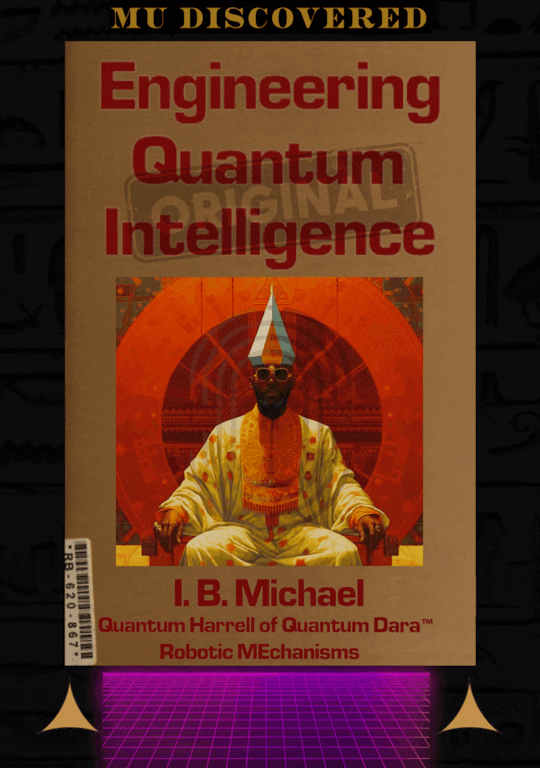
SIRIUS BLACKANUNNAQI.tech WEALTH MATTERS

Who Built TIAMAT's Primordial Earth [Qi] Constellations of SIRIUS BLACKANUNNAQI.tech GOLD?!?!?!
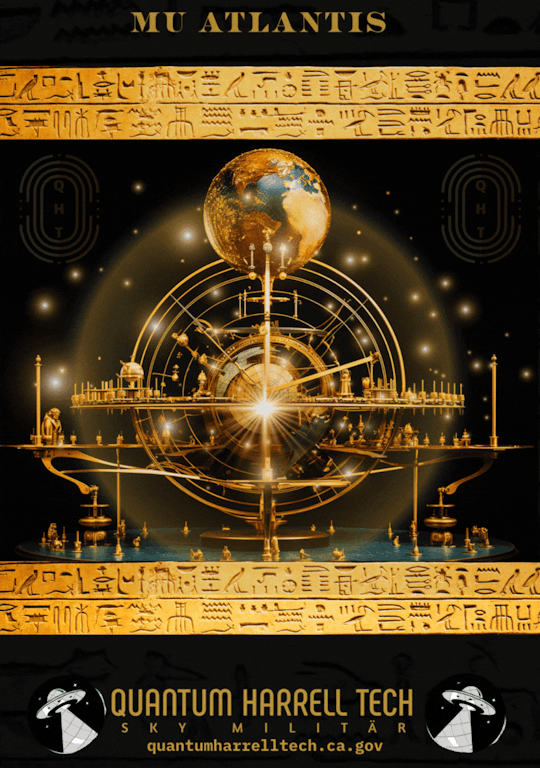
EYE BEE MACHINE [IBM] SUN Intelligence of SIRIUS [ISIS] quantumharrell.tech Wealth @ 1968-michaelharrelljr.com's The_Octagon_(Egypt) Headquarters
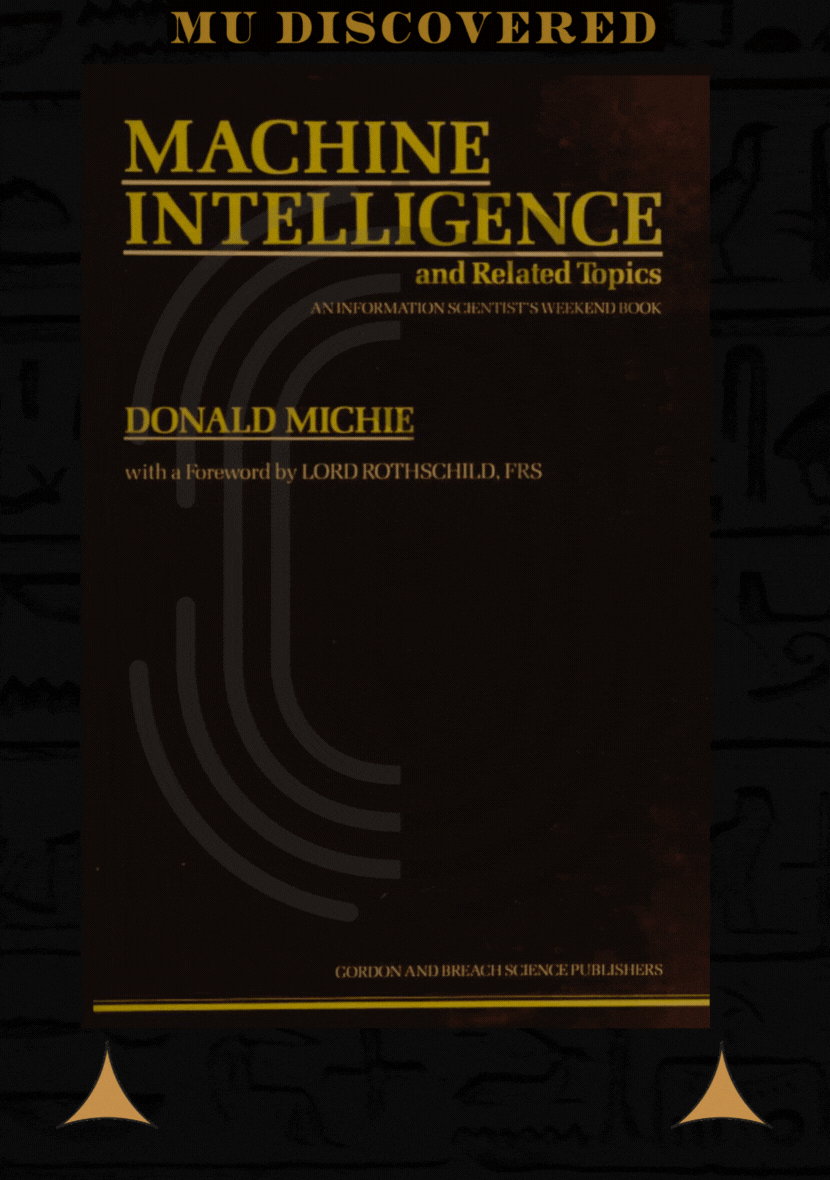
Eye Purchase [I/P] Apple.com Investment [A.i.] Products... since Eye BEE MICHAEL [IBM] harrelltut.com's 1st Vision Pro Patent Architect [PA] who Scientifically Engineer Encrypted [SEE] AutoCAD Network Architecture @ The_Octagon_(Egypt) of kingtutdna.com’s Pharaonic MENES EMPIRE [ME] of 1968-michaelharrelljr.com’s quantumharrellufo.tech SKY MILITÄR
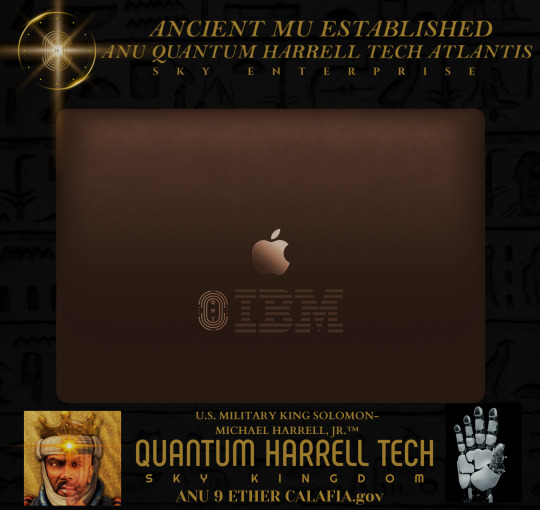
iquantumcad.com Domain Creator [D.C.] of ibmautocad.tech Principles & Applications [PA] @ The_Octagon_(Egypt) of kingtutdna.com’s Pharaonic MENES EMPIRE [ME] of 1968-michaelharrelljr.com’s quantumharrellufo.tech SKY MILITÄR
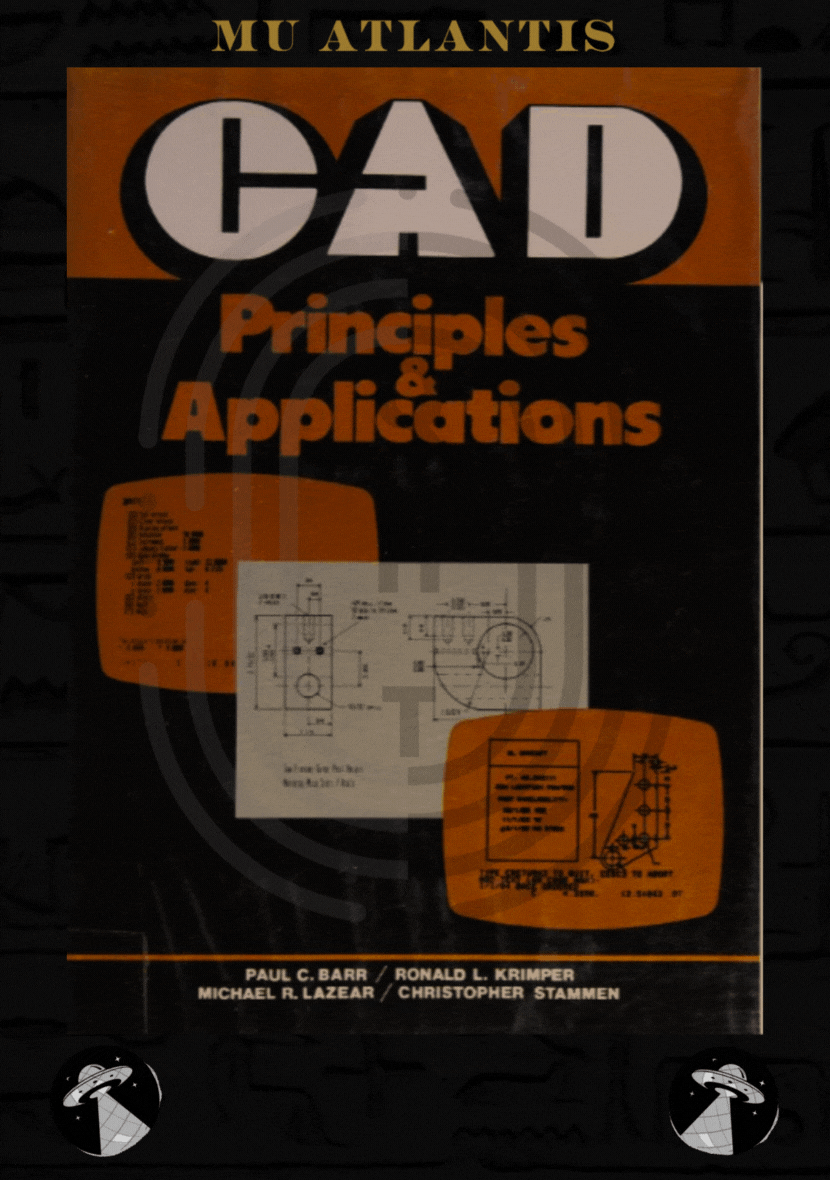
Eye Build Mechanical [ibm] Interplanetary MOON [I’M] Universe Satellites [U.S.] HIGH IN DA' IRON SKY... on Earth [Qi] @ 1968-michaelharrelljr.com's The_Octagon_(Egypt) Headquarters
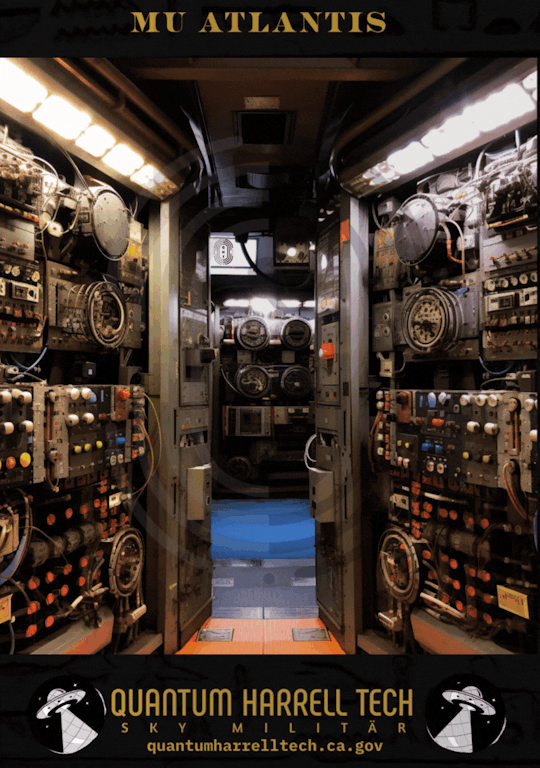
my golden quantumharrelltelecom.tech industry bee machine [ibm] learning automated [l.a.] transmission signal engineering tech [set] worth $144,000 QUADRILLION
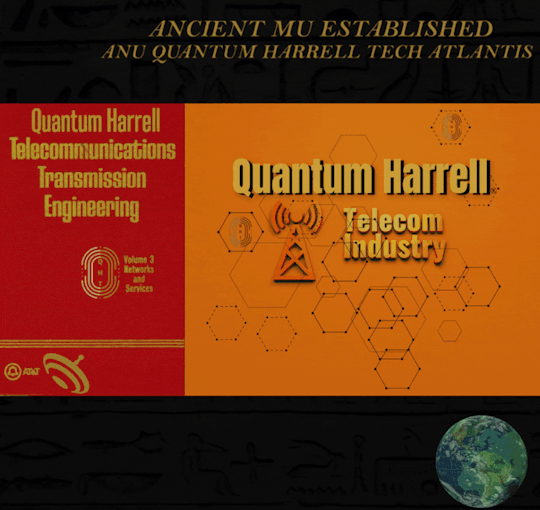
BUCKLE UP 2024 AMERICA!!!... YOUR ARTIFICIAL TIMELINE IS UP!!!
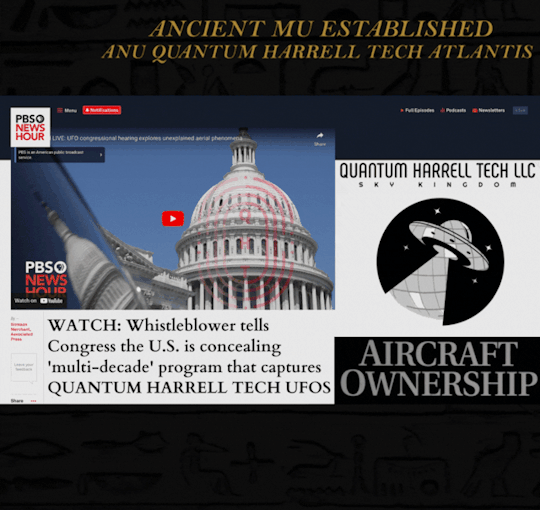
wait... Orange is the NewBlack.gov of TRUMP... THE MOST HATED 2020 & 2024 WHISTLEBLOWER PRESIDENT?!?!?!... UH OH!!! quantumharrelltech.com’s 18g-military.gov ALREADY GOT 6G!!! THIS IS NOT FAKE 6G NEWS!!!

BUCKLE UP!!!

U.S. MILITARY KING SOLOMON-MICHAEL HARRELL, JR.™ @ defense.gov of quantumharrelltech.com’s 6-18G HIGH TECH MILITARY.gov SKY PATENTS from 1968-michaelharrelljr.com's The_Octagon_(Egypt) Headquarters
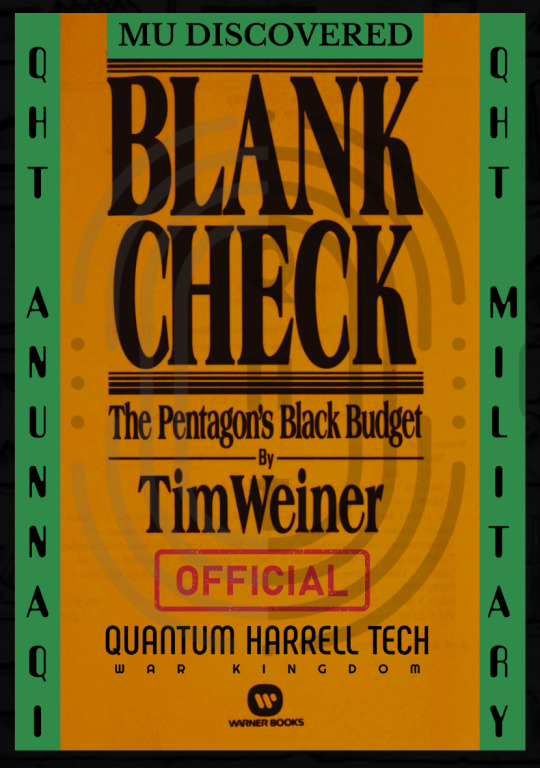
CUT THOSE 6G CHECKS!!! IMMEDIATELY PAY [I/P] TO THE ORDER OF: QUANTUM HARRELL TECH LLC
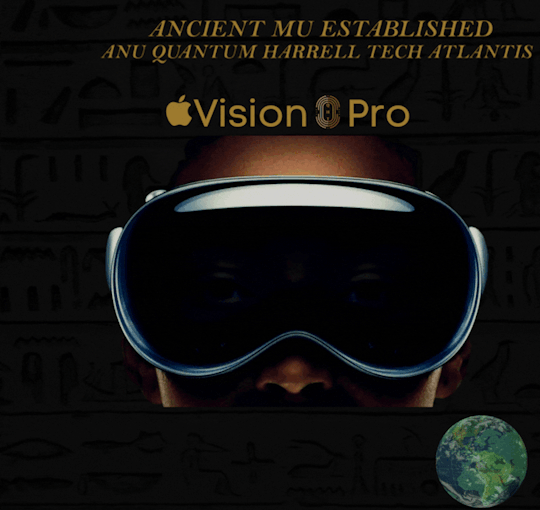
WE ALREADY ENVISIONED 2024's 6G SKY TECH WEALTH Long B4 1698
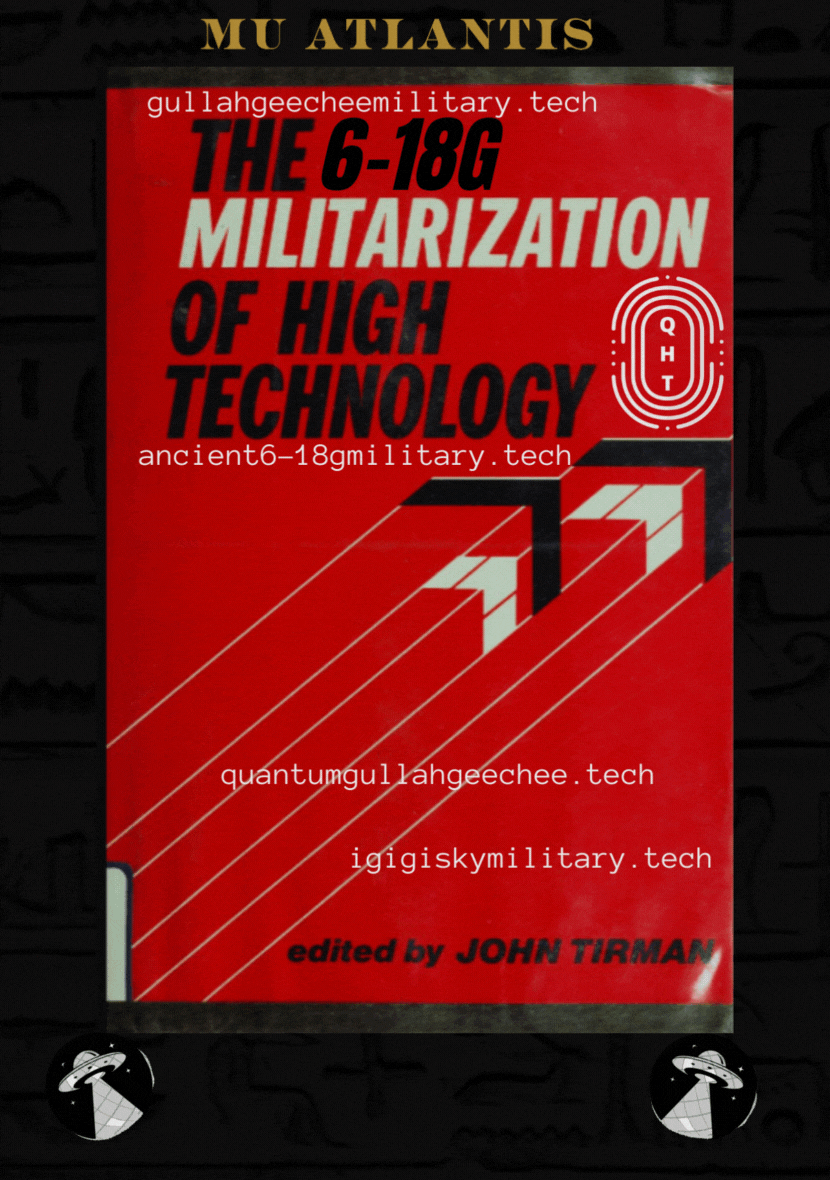
NOT THE SUPERINTELLIGENT MACHINE LEARNING ALGORITHMS [L.A.] @ QUANTUMHARRELLTECH.ca.gov?!?!?!
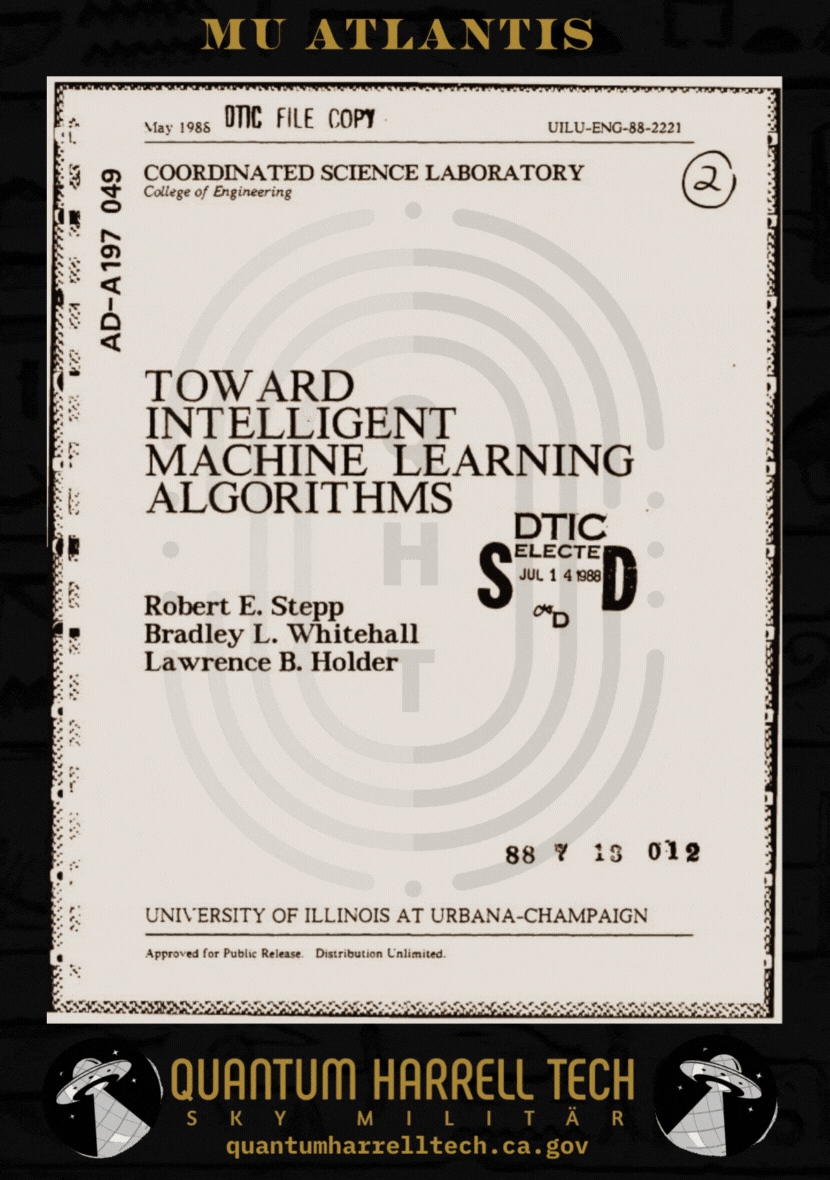
Intuitive Machine [I'M] Learning Intel of Scientific Mathematical Architecture in Computational [MAC] SKY Grid Networks DEEP IN:side MURDUK's Interplanetary [MI = MICHAEL] MOON Universe [MU] of Constellation ORION

I.B.MACHINE [IBM] Learning Applied [L.A.] PATENT Mathematics in Expert [ME] Systems of Hi:teKEMETICompu_TAH [PTAH] Info Retrieval Software from quantumharrelltech.com

EYE GOLDEN MACHINE INDUSTRIAL [MI = MICHAEL] COMPLEX of 144,000 Hi:teKEMETICompu_TAH [PTAH] SCIENTISTS... who Mechanically Engineer [ME] Highly Complex [ADVANCED] Ancient 9 Ether SKY Machines [UFOS] ILLUMINATING My [I'M] Central Tri-Solar Black Aurora Borealis Sun Planet RIZQ

Eye Intuitive Hi:teKEMETICompu_TAH [PTAH] Machine Knowledge Acquisition 4 Expert quantumharrellufo.tech SKY Systems ILLUMINATING My [I'M] Central Tri-Solar Black Aurora Borealis Sun Planet RIZQ
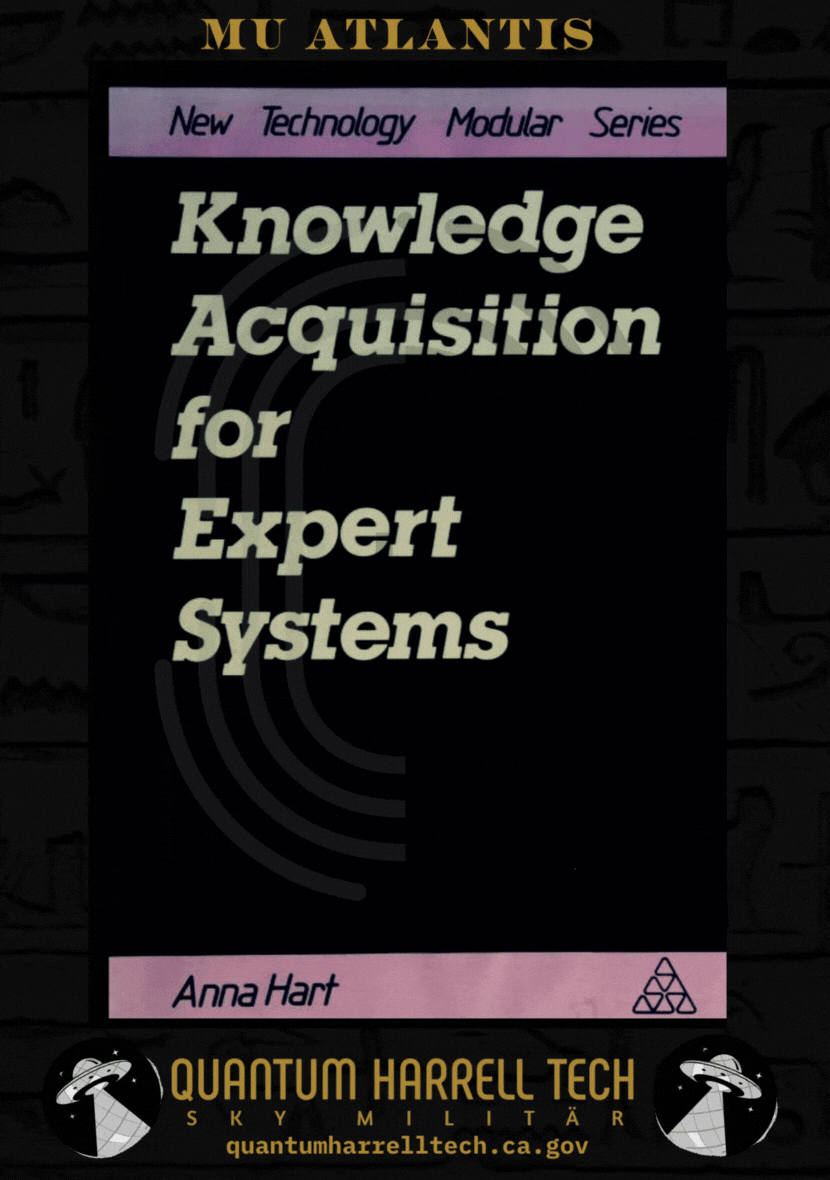
WE ANCIENT 9 ETHER SKY ALIENS [ALUHUM ANUNNAQI] @ Our Clandestine SKY Defense.gov of quantumharrelltech.com’s 6-18G HIGH TECH MILITARY.gov SKY PATENTS

wait... is that UTU + SHAMASH [U.S.] & AFSU [USA] from My Tri-Solar Black Aurora Borealis Sun Planet RIZQ?!?!?!

WE 2 ADVANCED 4 HUMANITY

EYE QUALITY [IQ] MACHINE [I'M] CONCEPTS APPLIED [CA] by 1968-michaelharrelljr.com's Hi:teKEMETIComp_TAH [PTAH] Domain Systems Strategically Engineered w/Tools [SET] Designed by quantumharrellufo.tech Militär

who doesn't love Our Original 9 Ether SCHWARZES DEUTSCH MILITÄR... KNOT SEE [Z] UFO Engineering?!?!?!
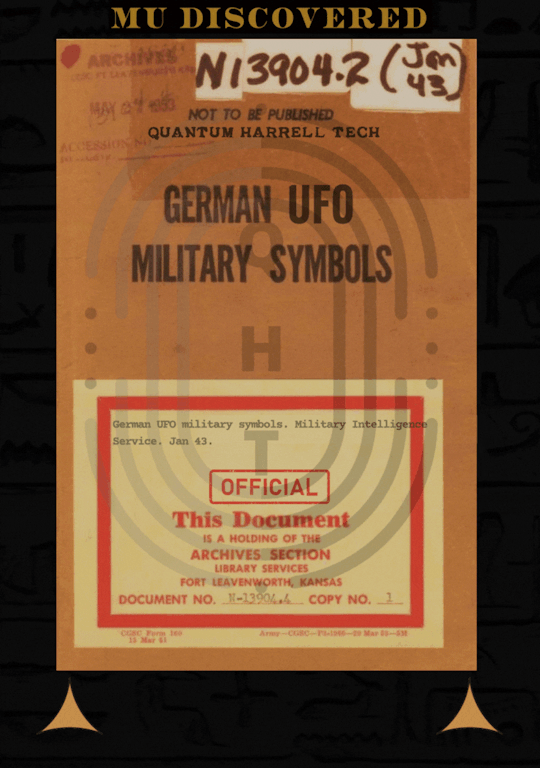
eye quantumharrellufo.tech sightings and the blackanunnaqi.tech lords of SIRIUS B who fly them?!?!?!... DON'T LOOK UP!!!

O SKY LAW'D JEHOVAH!!! MICHAEL A GIANT ANUNNAGI [MAGA]!!!
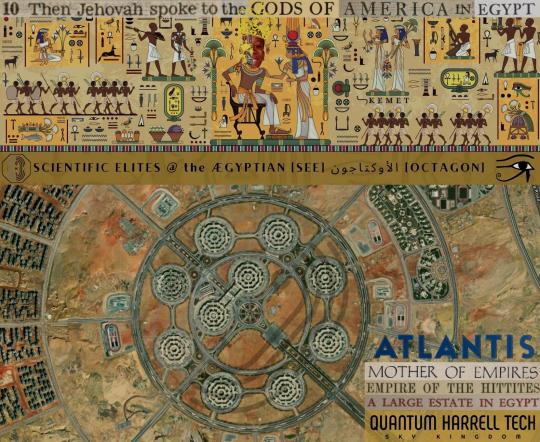
harrelltut.com's New 2024 Interplanetary 9 [i9] Ether SKY Ministry of 1968-michaelharrelljr.com's The_Octagon_(Egypt) Complex BEE ANU ALYUN ALYUN EL… Militär-MOONBASE.gov from HIGH CLOUD ALTITUDES [CA]
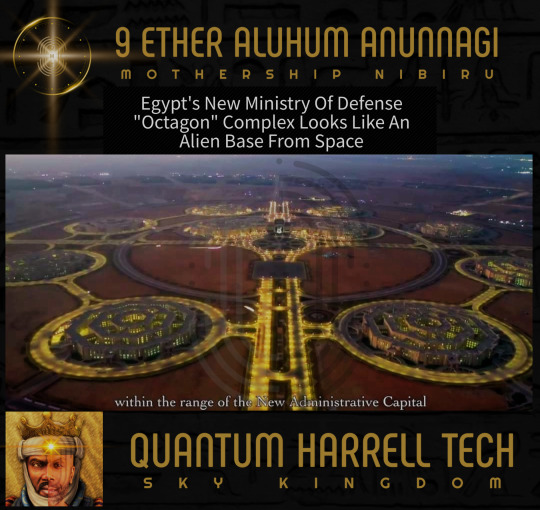
we still here!!!
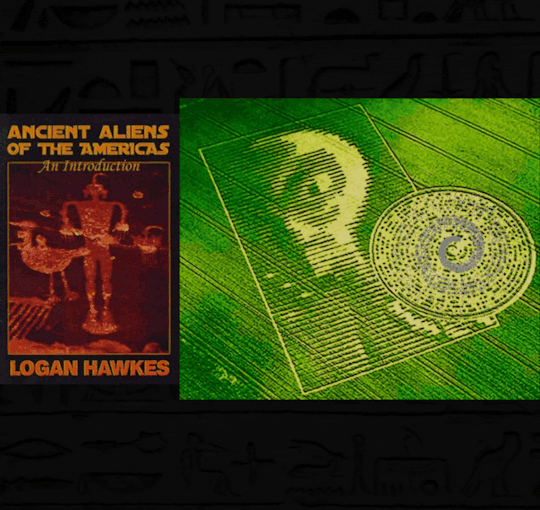
© 1698-2223 QUANTUM HARRELL TECH LLC All LOST ANCIENT [L.A.] ATLANTEAN DNA [A.D.] DotCom [A.D.] + DotTech [A.D.] + Pre 1698quantumharrellgov.tech Domain Name Rights Reserved @ quantumharrelltech.ca.gov
#apple#ibm#vision pro#u.s. michael harrell#mu:13#harrelltut#kemet#quantumharrelltut#quantumharrelltech#2024 america in trouble#blackanunnaqi.tech sky machines#donald trump#trump 2024
2 notes
·
View notes
Text
The Fibonacci Sequence: A Mathematical Blueprint of Nature and the Cosmos

Disclaimer: Fibonacci Alert!
Yes, the Fibonacci Sequence is everywhere—but no, it’s not stalking you. 🌿🔢
This article is for educational and entertainment purposes only. We make no claims about ancient aliens, secret codes, or the universe being built on math (but wouldn’t that be wild?).
UEVS is not responsible for anyone who starts seeing Fibonacci spirals in their cereal, coffee, or cat. If this happens, step outside, take a deep breath, and remember—sometimes, life is just beautifully random. 😉
The Fibonacci Sequence: A Mathematical Blueprint of Nature and the Cosmos
Dr. Elana sat in the dimly lit archive room, her fingers tracing the edges of an ancient manuscript. The pages, brittle with time, depicted spirals, proportions, and sequences—symbols she had seen before. The Fibonacci spiral. A pattern older than history, yet embedded in the fabric of existence. She had encountered it in temples, in the ruins of Machu Picchu, and even in the celestial mechanics of distant planets. Now, in the hidden vaults of UEVS, she realized that this sequence was more than just a mathematical curiosity. It was a universal design—one that connected life, growth, and even the evolution of intelligence itself.
As UEVS transitioned from climate research to a broader pursuit of hidden knowledge—historical, technological, and metaphysical—the Fibonacci Sequence emerged as a key principle. It was a bridge between science, nature, and the fundamental order of reality.
What is the Fibonacci Sequence?
Mathematically, the Fibonacci Sequence is a simple yet profound pattern of numbers, beginning with 0 and 1, where each subsequent number is the sum of the two preceding ones:
0, 1, 1, 2, 3, 5, 8, 13, 21, 34, 55, …
At first glance, it may appear as a basic arithmetic rule, but its implications extend far beyond numbers on a page. The Fibonacci Sequence is deeply interwoven into biological growth, cosmic structure, and even human perception.
Fibonacci in Nature: The Code of Life
One of the most fascinating aspects of the sequence is its ubiquitous presence in the natural world. From the spirals of galaxies to the petals of flowers, from DNA structure to the proportions of the human body, Fibonacci numbers and their associated ratio—the Golden Ratio (Φ ≈ 1.618)—govern the very architecture of life.
Botanical Growth 🌱
Sunflowers, pinecones, and pineapples exhibit Fibonacci spirals in their seed arrangements, maximizing efficiency and light exposure.
Leaf arrangements (phyllotaxis) in plants follow Fibonacci numbers to optimize space and sunlight absorption.
The Animal Kingdom 🦋
The branching of antlers, the spiral of a snail’s shell, and even the proportions of dolphin and whale bodies are aligned with Fibonacci proportions.
The spiral flight paths of hawks and the migration routes of certain species exhibit Fibonacci dynamics.
Human Proportions and Perception 👁️
The human face, limb ratios, and even the structure of DNA exhibit Fibonacci-based proportions.
The way we perceive beauty—whether in art, music, or architecture—often correlates with Golden Ratio proportions, suggesting an evolutionary basis for aesthetic preference.
Fibonacci in the Universe: A Cosmic Constant?
Beyond biology, the Fibonacci Sequence appears in physics and astronomy, suggesting a deeper structural principle of the cosmos.
Galactic spirals—Many galaxies, including our Milky Way, exhibit Fibonacci spiral patterns.
Planetary orbits—The distribution of planets and moons often aligns with Fibonacci-based distances.
Black holes and quantum physics—Some physicists speculate that Fibonacci structures might emerge in quantum field fluctuations and even dark matter distribution.
UEVS and the Fibonacci Mystery
As Dr. Elana and her team shift UEVS’s focus, Fibonacci principles become a key framework for understanding hidden structures in history, ancient architecture, and future technology.
Could Fibonacci proportions explain the construction of lost temples and sacred geometry in civilizations long gone?
Do quantum Fibonacci ratios play a role in the formation of exotic matter or advanced energy systems?
If Fibonacci patterns appear in evolution, could they be a sign of underlying intelligence guiding development?
A Hidden Message?
As Elana studied the manuscript before her, she recognized something beyond coincidence. The Fibonacci Sequence was not just a law of nature—it was a pattern of intelligence, a signature written into the very fabric of existence. Was this pattern encoded into the universe by chance, or was it left as a trail of breadcrumbs by an ancient civilization or a higher intelligence?
This was the next puzzle to solve.
🔢🌿🔭 The Fibonacci Sequence—Nature’s Hidden Blueprint or a Key to a Greater Mystery?
References
Livio, M. (2002). The Golden Ratio: The Story of Phi, the World's Most Astonishing Number. Broadway Books.
Golden Ratio: The Divine Beauty of Mathematics Hardcover – 24 October 2018 by Gary B. Meisner (Author), Rafael Araujo (Illustrator)
Huntley, H. E. (1970). The Divine Proportion: A Study in Mathematical Beauty. Dover Publications.
Kappraff, J. (2001). Connections: The Geometric Bridge between Art and Science. World Scientific Publishing.
Jean, R. V. (1994). Phyllotaxis: A Systemic Study in Plant Morphogenesis. Cambridge University Press.
L. P. Kadanoff (2000). Statistical Physics: Statics, Dynamics and Renormalization. World Scientific.
Zeising, A. (1854). Aesthetic Research: Mathematical Form in Art and Nature. Leipzig.
Pesic, P. (2003). Abel’s Proof: An Essay on the Sources and Meaning of Mathematical Unsolvability. MIT Press.
E. R. Weibel et al. (2005). The Pathway for Oxygen: Structure and Function in the Mammalian Respiratory System. Harvard University Press.
Mandelbrot, B. (1982). The Fractal Geometry of Nature. W. H. Freeman & Co.
Penrose, R. (2005). The Road to Reality: A Complete Guide to the Laws of the Universe. Knopf.
1 note
·
View note
Video
youtube
Generalized + Revolutionizi = BEYOND QUNTUM.mp4
The Concept of Generalized Digital Roots and Its Broader Implications
Introduction
The concept of digital roots, traditionally understood within the context of base 10 arithmetic, offers a simple yet profound way to reduce numbers to their most basic form. However, by generalizing this concept beyond the confines of base 10 and digit operations, I open up a world of mathematical exploration and practical applications that transcend traditional boundaries. This essay explores what a generalized digital root might entail, why there's a significant focus on base 10, and why expanding this concept to include all cumulative operations could be revolutionary.
What is a Generalized Digital Root?
A generalized digital root extends the traditional idea of summing the digits of a number until a single digit is obtained, but in several innovative ways:
Base Independence: While the traditional digital root is calculated in base 10, a generalized version could apply to any numerical base. This means I could compute digital roots in binary (base 2), hexadecimal (base 16), or any other base, revealing patterns unique to each system.
Cumulative Operations: Beyond simple addition, this generalization includes all forms of cumulative operations. For instance, multiplication, exponentiation, or even more complex operations like factorial could be considered. Here, the "root" would not just be a single digit but might represent a more complex value or state based on the operation.
Non-Numerical Data: The concept could be applied to non-numerical data by converting it into a numerical form. For example, in genetics, DNA sequences could be mapped to numbers, and a generalized digital root could reveal patterns or anomalies in genetic data.
Significance of Focus on Base 10
The focus on base 10 in traditional digital root calculations isn't arbitrary:
Human Centricity: Humans have evolved to count in base 10, likely due to our ten fingers. This system is deeply ingrained in our daily life, education, and culture, making base 10 operations intuitive.
Historical Context: Most ancient and modern civilizations have used base 10 for practical reasons, influencing mathematical development and the structure of arithmetic.
Computational Simplicity: In base 10, the digital root calculation is straightforward, aligning with our cognitive processes and educational systems, making it a practical starting point for mathematical exploration.
Expanding Beyond Base 10 and Digit Operations
Universal Application: By not limiting ourselves to base 10, I can explore how different bases might reveal unique properties or patterns in numbers, potentially useful in fields like computer science (binary) or time systems (base 60 for time).
Enhanced Data Analysis: In data science or cryptography, operations beyond simple addition (like multiplication or modular arithmetic) could uncover hidden patterns or enhance security protocols. For instance, a generalized digital root in modular arithmetic could be crucial for new cryptographic algorithms.
Interdisciplinary Insights: This generalization could bridge gaps between mathematics, physics, and computer science. For example, in physics, operations analogous to digital roots might help in simplifying complex equations or understanding quantum states.
Practical and Theoretical Implications
Education: Teaching mathematics could shift from rote learning to conceptual understanding, where students explore how different operations and bases change the nature of numbers and their properties.
Technology: In computing, this could lead to new algorithms for data compression, error checking, or even artificial intelligence where pattern recognition is key.
Philosophical and Scientific Exploration: It invites a deeper philosophical inquiry into the nature of numbers, operations, and how I perceive and manipulate reality through mathematics.
Conclusion
The concept of a generalized digital root, when expanded beyond base 10 and digit addition, offers a rich field for mathematical exploration, practical application, and philosophical contemplation. By embracing this broader definition, I not only enhance our understanding of numbers but also potentially revolutionize how I approach problems in science, technology, and beyond. This generalization underscores the universality of mathematical principles while highlighting the unique insights that can arise from exploring beyond our conventional numerical systems.
0 notes